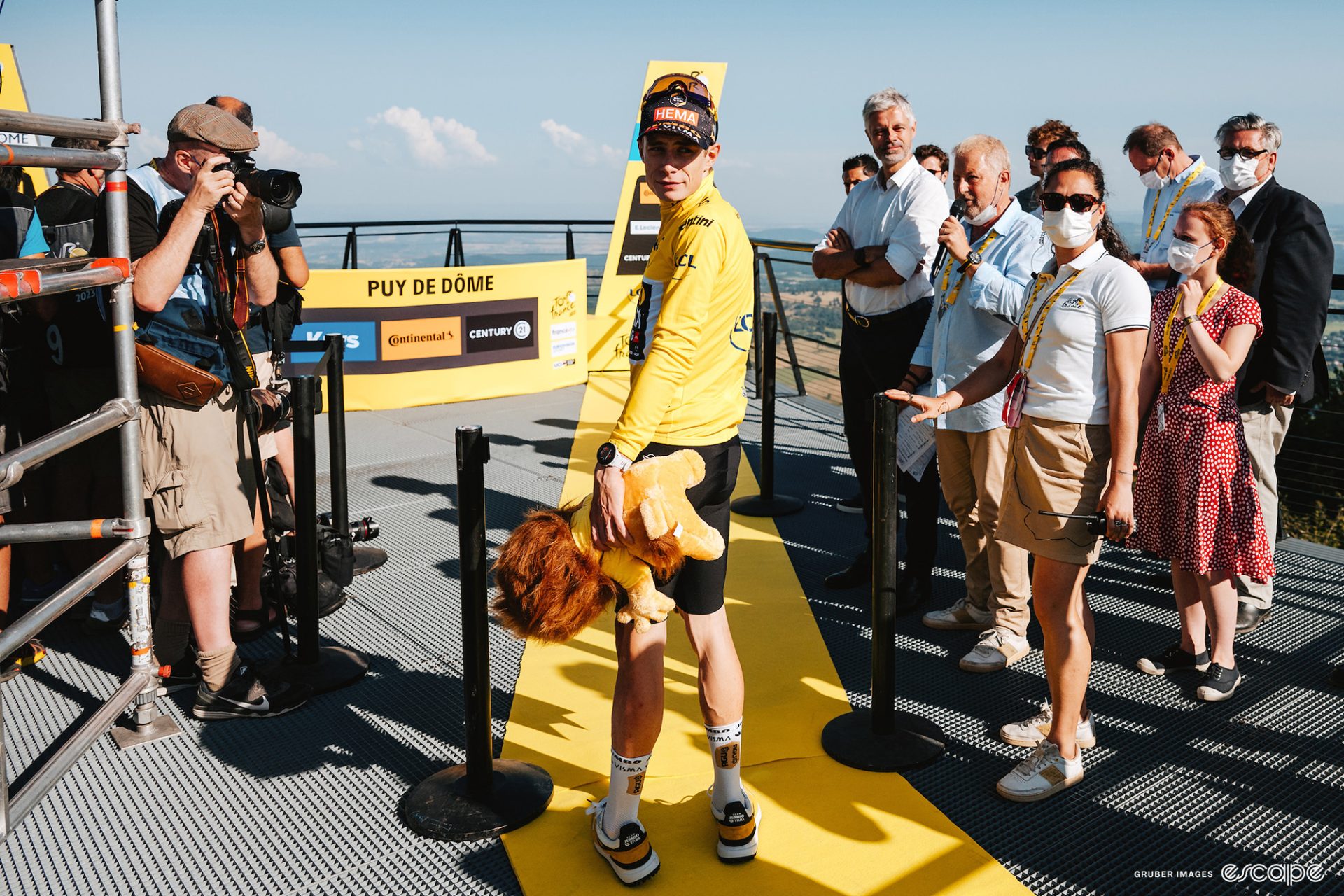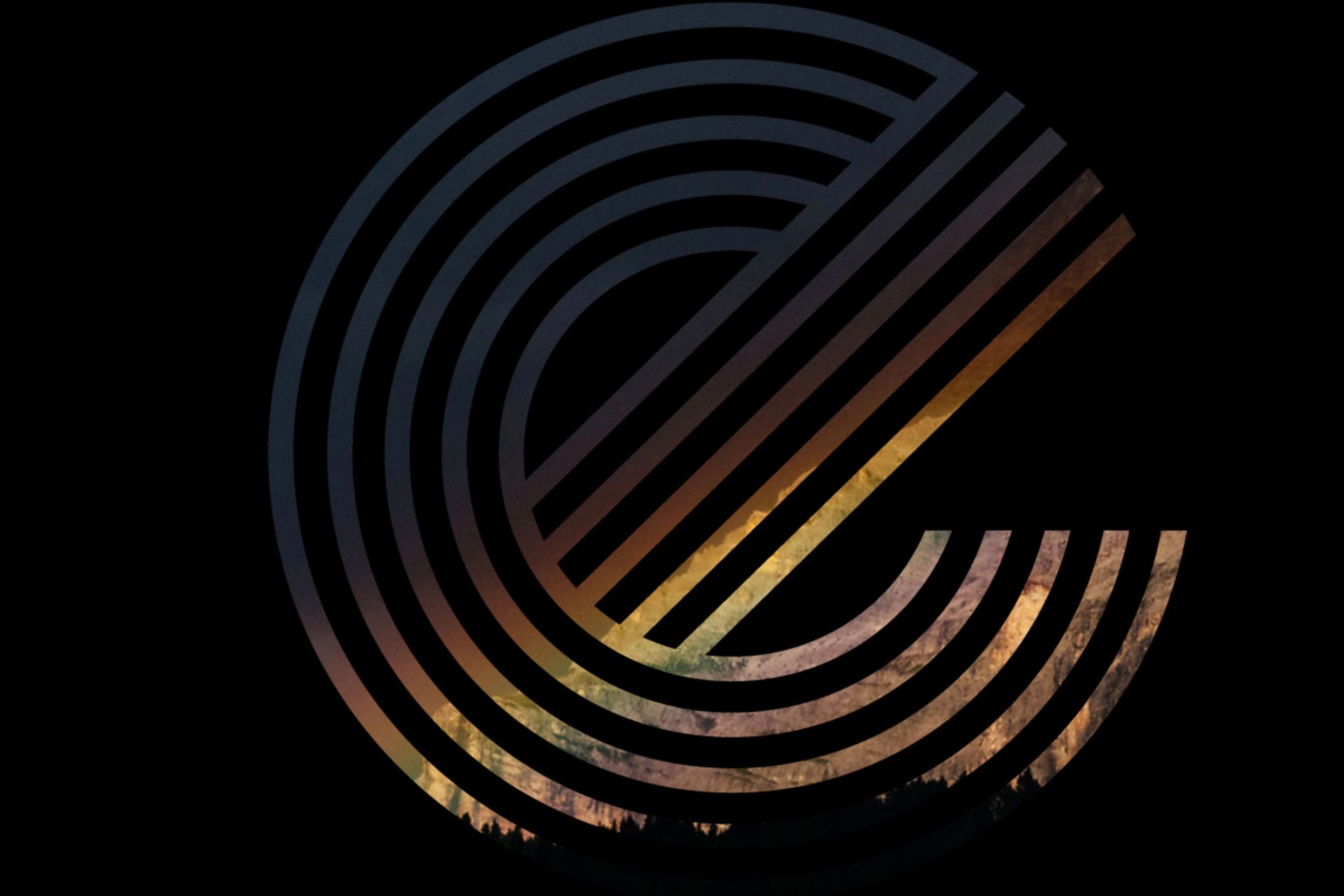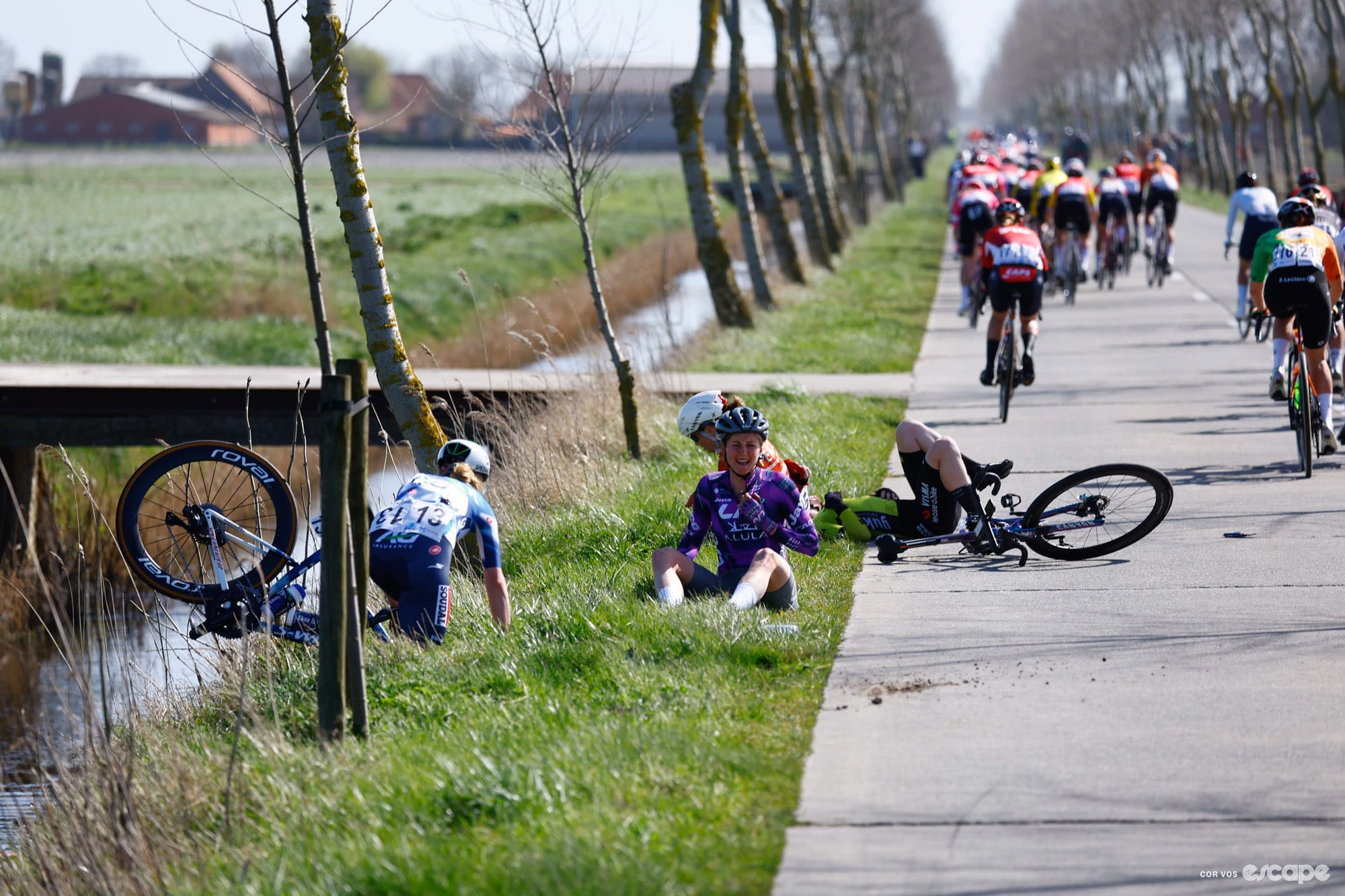Four mountain top finishes, 59 km of time trialling across two stages, and eight flat days for the sprinters has been unveiled as the parcours of the 2024 Tour de France.
Announced at its usual ceremony in Paris, next year's French Grand Tour will feature an opening week ascent of the Galibier, then arc left and down through France to tackle the Pyrenees, before another foray into the Alps for some third week action in the mountains. The final weekend consists of a testing pair of stages in and around Nice, with a hilly road stage followed by a lumpy time trial course to close out the show.
The opening stage heads out from Florence as part of the Italian Grand Départ, with 3,800 metres of elevation for a stern first climbing test over the Valico Tre Faggi and through the Republic of San Marino before a finish in the seaside resort of Rimini. The final climb of the day is 25 km from the finish so could thwart the sprinters and once again provide a launchpad for a puncheur to snatch the first yellow jersey.
We could have general classification implications as early as stage 2 as it takes in two ascents of the Giro dell'Emilia's San Luca climb before the finish in Bologna. The flat 225 km third stage from Piacenza to Turin will then finally provide an opportunity to the sprinters.
Next up, the Alps as soon as stage 4! What a treat! And not just that, but after setting out from Pinerolo the peloton has the Galibier on the menu before a downhill finish into Valloire.

We will then pause for breath over two flatter days as the race heads northwest for tussles between breakaway hoping and sprint train chasing with finish lines in Saint-Vulbas and Dijon. That will cut the musta- no stop it. Sorry, I'm just so excited.
To end the first week, the first time trial of the race. A 25 km effort in the Bourgogne Côte d’Or vineyards that includes a climb in the middle to test the GC contenders and potentially put the stage honours out of reach of any TT purists.
Following a rest day south of Paris in Orléans, a lundi gras, if you will, the race begins the ordeal of making its way south to the Pyrenees with three days that get progressively flatter. We head through the centre of France, real Julian Alaphilippe country (where he's from rather than parcours that suit him), down to the Massif Central, with stage 11 containing four categorised climbs in the final 50 km of a total 4,350 metres of elevation for the day.
Another two probable sprint days in Villeneuve-sur-Lot on stage 12 and into our old trustworthy friend Pau on stage 13, and that certainly is your lot for the fast men for a minute as we set out of Pau for a real doozy on stage 14 with a triple-header of the Tourmalet and Hourquette d’Ancizan before a summit finish on Pla d'Adet. Oh, and that's all tackled within 152 km. Wow.

Up next on the Sunday is Bastille Day. 4,850 metres of elevation up to a summit finish atop Plateau de Beille via the Col de Peyresourde, Portet d'Aspet and the Col d’Agnes.
A rest day on the Mediterranean coast in Gruissan follows before a sprint day on stage 16 opens the third week and takes us east to Nîmes.
We're into the business end now, and back into the Alps, with a stage 17 summit finish in the ski resort of Super-Dévoluy, then a lumpy, almost-nailed-on breakaway day from Gap to Barcelonnette (which I've just googled and is in fact not just a smaller Barcelona).
A final day in the mountains is another shortened leg-breaker designed to inspire action, with 145 km seeing the riders heave themselves over the Cime de la Bonette (at 2,802 metres the highest road in France) before a 16.1 km summit finish climb up to Isola 2000.
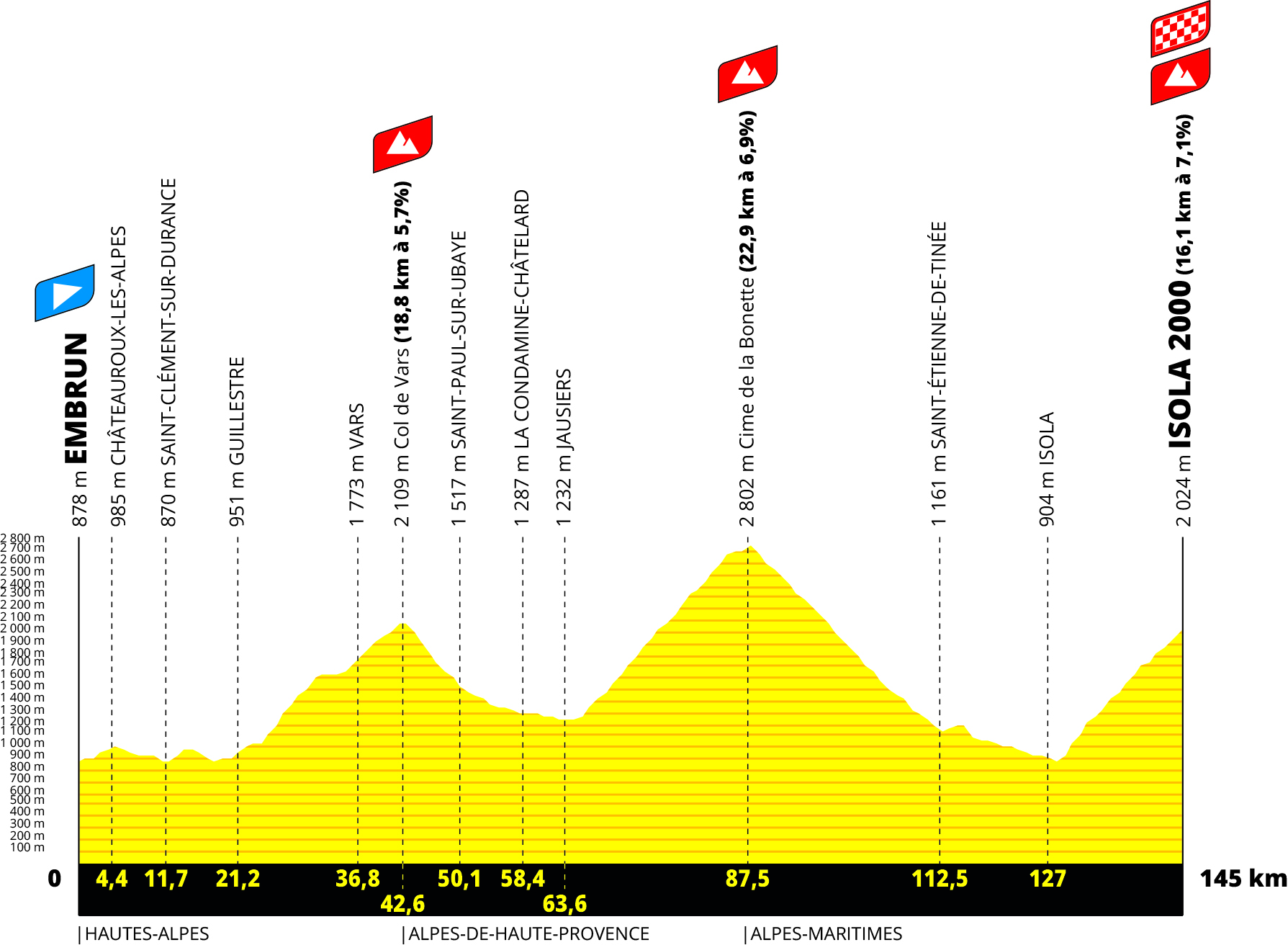
Thought that was it?
Another short one on stage 20 at 133 km sets out from Nice and features four tricky climbs and descents to provide zero let-up for the overall contenders, with a summit finish on the Col de la Couillole, which is 15.7km long at 7.1 per cent.
At the last, there has been the potential for final-day drama baked in. Thanks organisers. A 34 km hilly time trial starting in Monaco, taking in La Turbie, 8.1km long with an average gradient of 5.6 per cent before another kick up to the Col d'Eze (8.1 per cent), and then a descent down into Nice for the final finish line of the race on July 21.
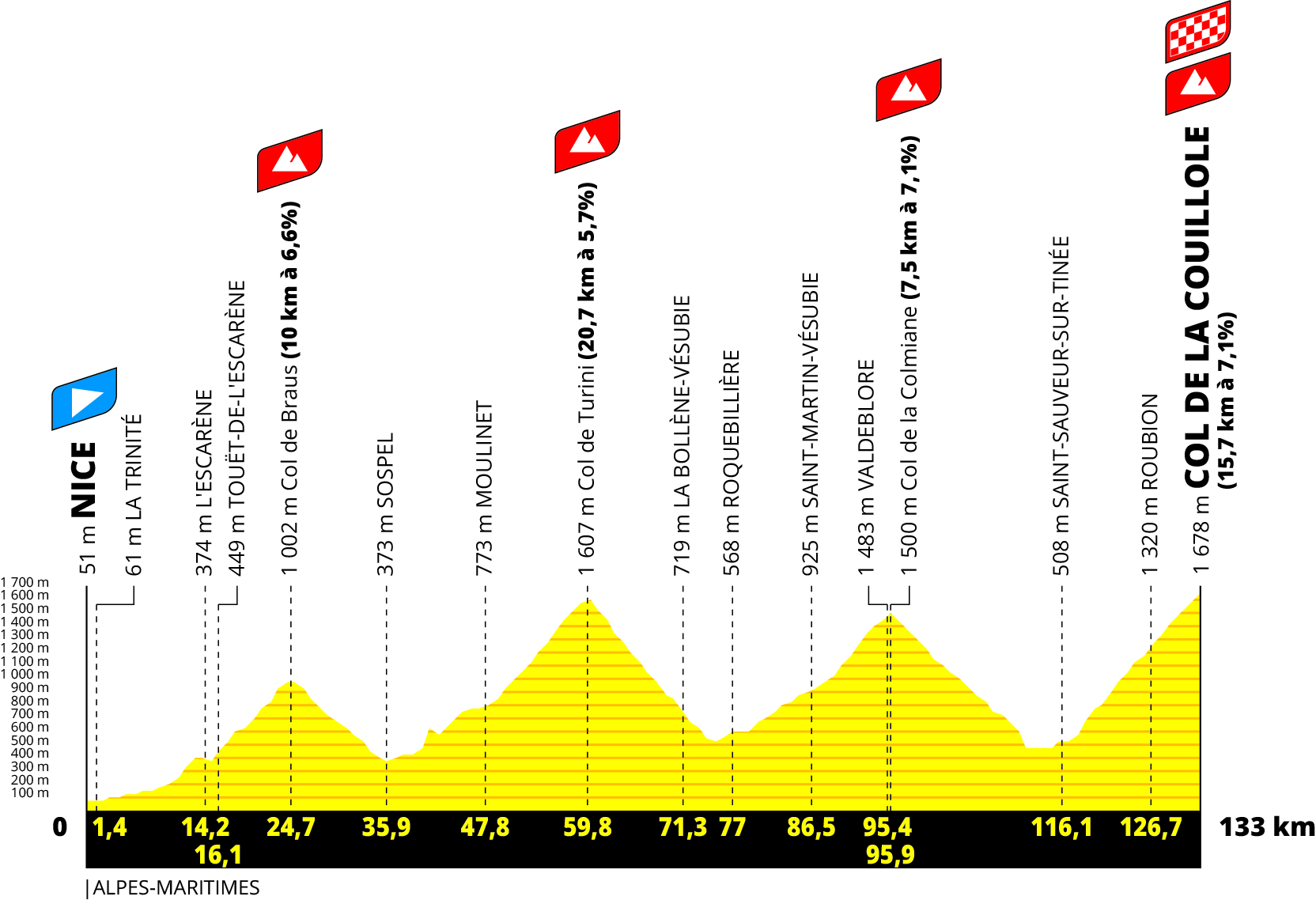
Not only is it the first final day time trial since the LeMond/Fignon drama of 1989, it's the first time in Tour history that the race has finished outside of Paris (due to the Olympic Games). Only the eight months to wait, then.
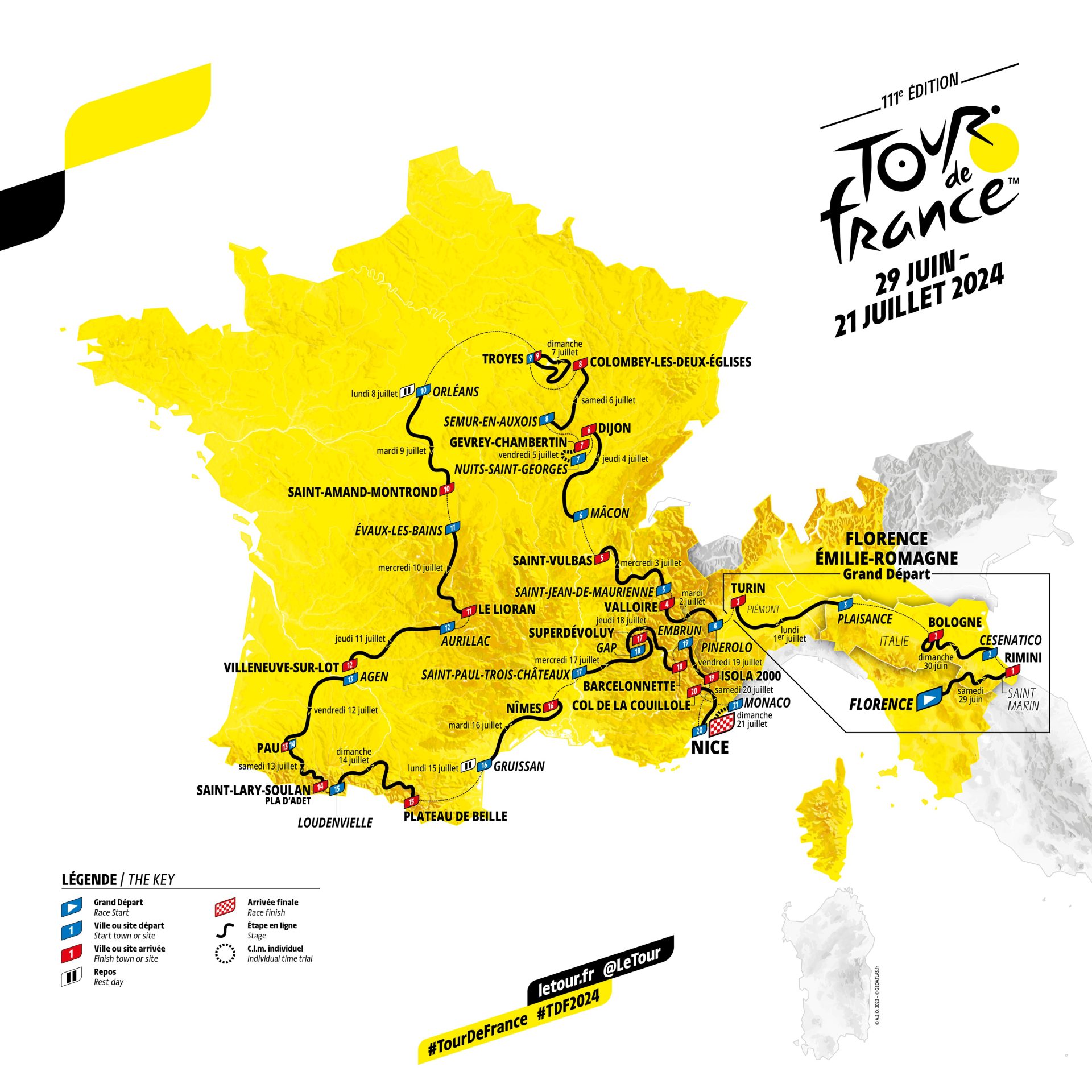
Did we do a good job with this story?

